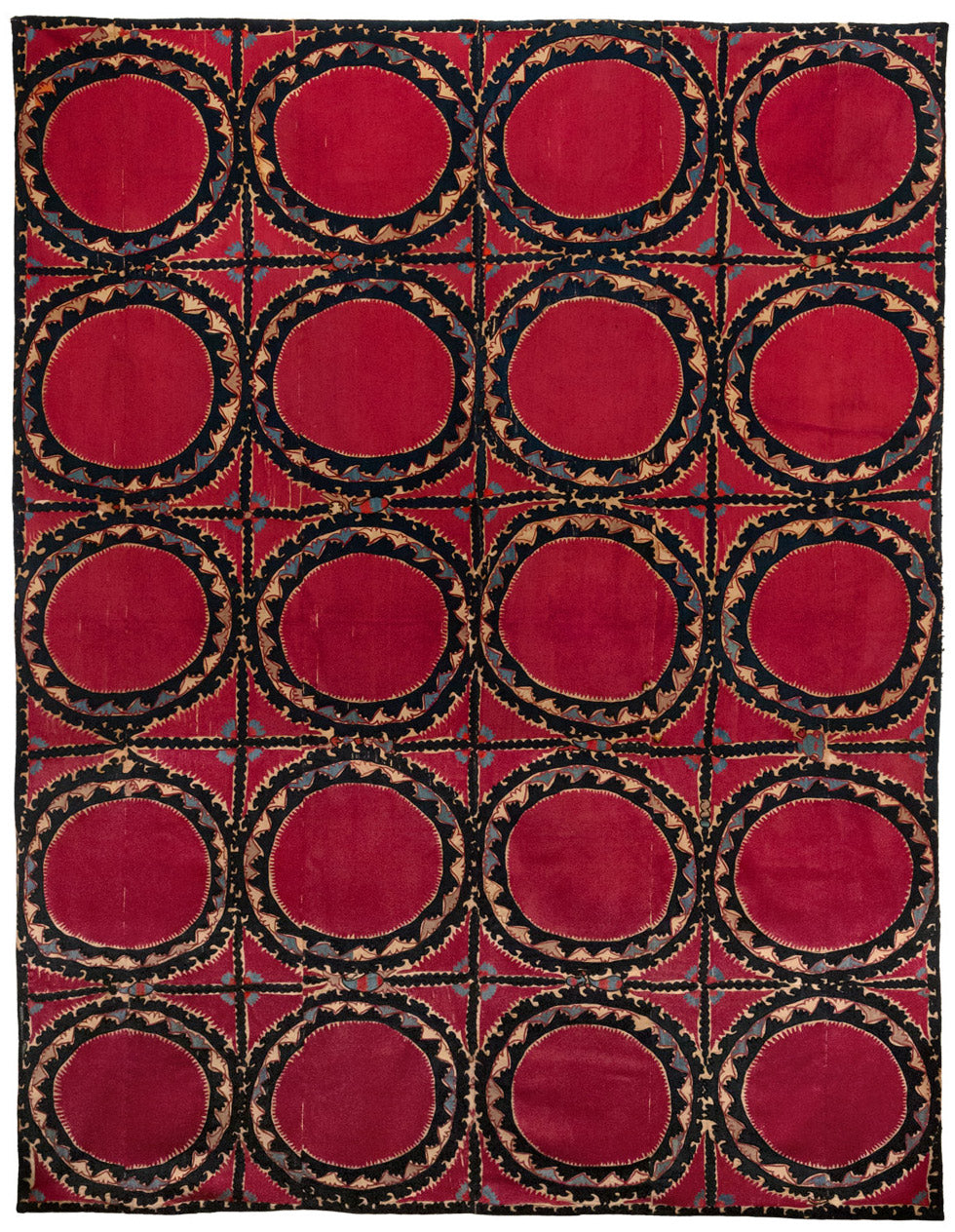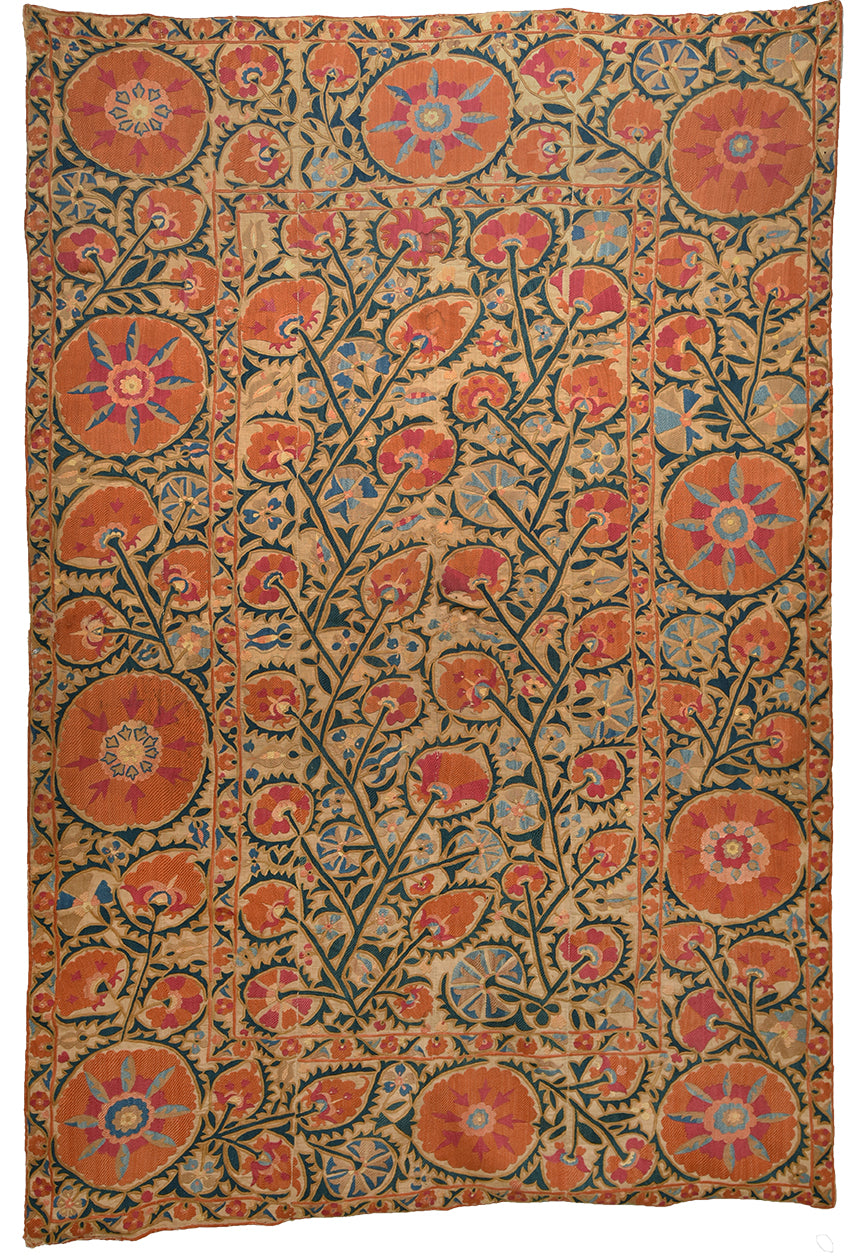Beginning in the 18th century and all the way to the early 20th century, suzanis were the most popular household textiles in Central Asia. They are dowery pieces that are formed by several individually embroidered panels. The design is drawn on, then women in the bride's family would each embroider a panel or two. As each embroiderer pulls differently on the stitches and use different dyes, the registry was off and colors didn’t quite match - which adds to their charm. Once completed, the panels are sewn together to create a large, stunning piece that can be used as a bed cover, a wall hanging, or for any other domestic purposes.
See below for some examples of the distinct styles of suzani from regions all over Uzbekistan.
Tashkent
Suzanis can be traced to their exact origins according to their decorating style. The two different kinds of suzanis that come out of Tashkent, Uzbekistan are called paliak (moon design) and gulkurpa (flower cloth). This suzani represents the paliak type in which the entire surface is covered with red circular blossoms.


Bukhara
Suzani embroideries from the Bukhara region tend to be bold and rustic in design. Colorful, densely embroidered rosettes and vegetables are surrounded by delicate vines and leaves.

Shakhrisabz
While these suzanis can be confused with those from Bukhara, the main distinguishing feature is the use of a motif known aschor-chirog (a lamp with four wicks). The origins of the lamp symbol goes back to Zoroastrianism, where it symbolized a sacred fire.

Nurata
The style created in Nurata typically shows floral bushes in all four corners pointing towards a central medallion. The main field is left mostly empty, sometimes decorated with additional florals and shrubs.


